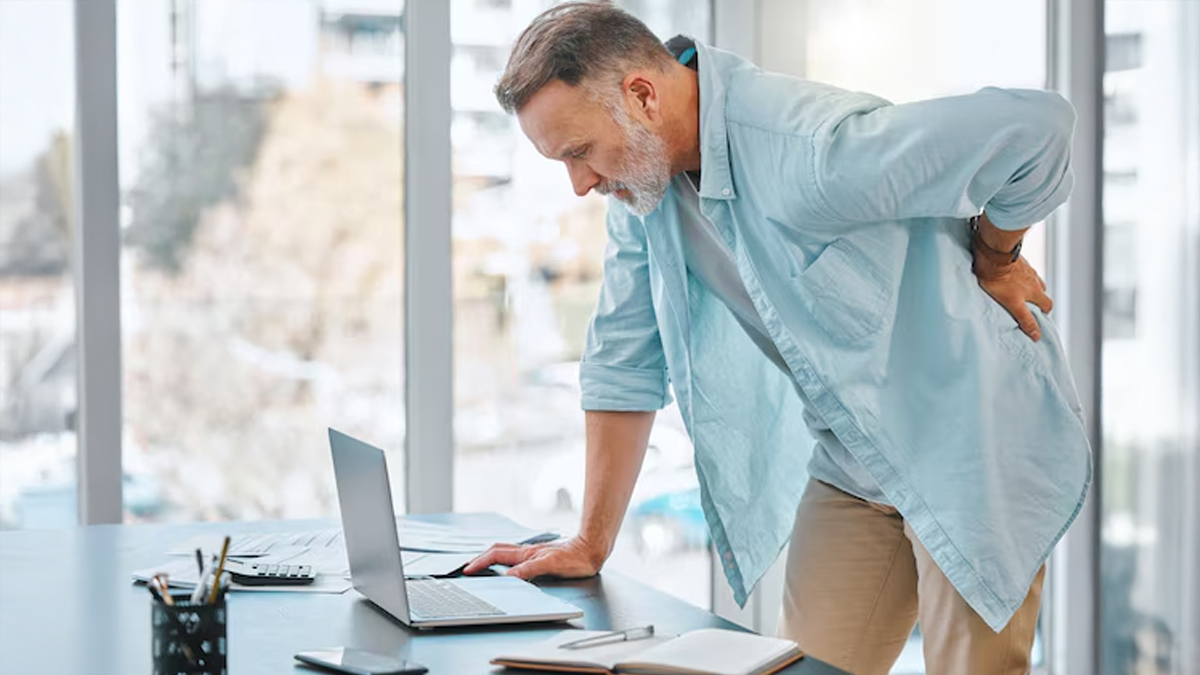
The rise of the digital economy has hugely transformed global IT cities like Bangalore. Along with this transformation comes an increasing health burden, which is quietly affecting the health and quality of life of the young professionals in Bangalore. The most common and concerning health issue is back pain, which used to be a serious health issue formerly faced by only middle-aged or senior citizens. Still, it has now also become a widespread issue among the youth.
Table of Content:-
We spoke to Dr Prashanth Kalale, Orthopaedic and Joint Replacement Surgeon, Apollo Spectra Hospital, Bangalore, who explained the increasing cases of back pain in young professionals.
Behind the Back Pain: What Causes It?

Due to poor workstation ergonomics and extended hours of work in front of computer screens, along with a sedentary lifestyle, these factors contribute to spinal issues. “The majority of young professionals spend almost 8-12 hours a day seated at their desks, often without any back support or breaks. This can cause constant strain in the cervical spine, leading to chronic lower back pain, stiffness in the upper back and even disc-related issues in some cases,” highlighted Dr Kalale.
These can worsen if the individual does not engage in any physical activity. Most young professionals hardly find time to exercise, which further weakens the muscles essential for spinal support.
Some of the most common back pain issues among the young working professionals include:
- Mechanical Back Pain: It is caused by poor posture or muscular strain.
- Disc Prolapse: This condition is most commonly seen in senior individuals; however, it is now being reported in people under 30.
- Thoracic outlet syndrome: Compression of the blood vessels in the space between your collarbone and the first rib. This is linked to back neck posture, and is highly on the rise.
- Myofascial pain syndrome: Characterised by tight knots or trigger points in the muscles, is another frequent condition.
A cross-sectional survey in Bengaluru involving 311 IT professionals linked prolonged sitting, poor workstation ergonomics, and inadequate posture to a heightened risk of lower back pain.
In a large ambulatory dataset from urban India, a retrospective review of ~71,700 patients showed that 26–45-year-olds, often professionals, made up over half the patients seeking treatment for spine pain, especially lower back and mid-back pain.
Also Read: Spinal Hygiene: What It Means And Why It’s the Next Ergonomic Movement
The Role of Mental Health and Stress in Physical Pain
Back pain among young professionals is not purely a physical concern. Chronic musculoskeletal pain frequently has a significant psychological element. “Workplace stress, longer working hours, sleep deprivation and emotional burnout lead to muscle tension and will further worsen the existing pain. Individuals under psychological stress are more prone to long-standing back pain. Central sensitisation, where the nervous system becomes more sensitive to pain signals, is highly noticeable in such cases,” explained Dr Kalale.
The Importance of Early Detection
One of the recurring patterns of this condition is the delayed response to the initial symptoms of back pain. Many young adults overlook the initial warning signs, which further enables the condition to progress to a more complex or chronic stage. Early intervention is crucial; a thorough physical examination facilitates an accurate diagnosis of the condition and enables effective treatment.
Also Read: As A Person In 30s And 40s, How Often Should You Go For Physiotherapy?
Tips For Prevention
Workplace back pain is preventable in many cases.
- Poor workplace ergonomics are a common contributor to the condition; it can be mitigated by using supportive chairs and adjustable monitors, which can help reduce spinal stress.
- Taking regular breaks or stretch breaks during working hours helps alleviate muscular fatigue and stiffness.
- Remote working conditions should also be managed, as individuals often prefer working from couches or beds, which can lead to poor spinal alignment and repetitive strain.
- A proper workspace that supports spinal health should be prioritised.
[Disclaimer: This article contains information provided by an expert and is for informational purposes only. Hence, we advise you to consult your professional if you are dealing with any health issue to avoid complications.]
Also watch this video
How we keep this article up to date:
We work with experts and keep a close eye on the latest in health and wellness. Whenever there is a new research or helpful information, we update our articles with accurate and useful advice.
Current Version